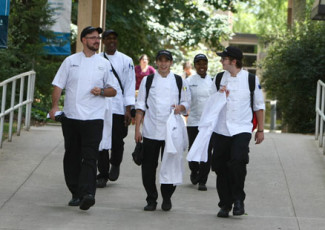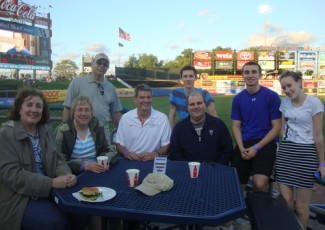Taking Stock of Your College Fundraising Efforts
By Paul Heaton
July 10, 2014
In a time of decreased state and federal funding, it’s important to ensure your college has a strategic plan for reaching out to and connecting with new and existing donors.
Every good community college president — as well as foundation director — wants to amplify the amount of private philanthropic support they can secure to advance the college.
How, though, does a CEO measure the foundation’s performance and know what to expect?
Benchmarking your fundraising efforts, while essential, is sometimes tricky for community colleges. Your peer institutions may have foundations that are in their infancy, have incomparable staffing, or may be amid a comprehensive campaign.
So, where to start?
No. 1: Look in the mirror. “The college president plays a key role in advancement work and can be the catalyst, architect and cheerleader to get the college’s foundation to the next level,” Bill Scroggins, president of Mt. San Antonio College in California, writes in a forthcoming CASE book on community college advancement.
And it’s not just about raising more money, writes Scroggins. “Your vision for the foundation must incorporate today’s reality, tomorrow’s goal, and a path to connect the two.”
Today’s reality is that most community college fundraising programs are woefully understaffed and underresourced.
Some resource considerations:
- Staffing, of course. The median number of full-time fundraisers at community colleges is two, but in many cases those staff have myriad other responsibilities not directly related to fundraising.
- Marketing and communications. Does the foundation have full support of the college marketing and communications department? It should.
- Data. Is donor and alumni data properly maintained and regularly updated? Does your software facilitate communication, segmentation and tracking donor interactions and preferences? Find out what you are tracking — and make sure you have a way to connect with donors.
- Faculty and staff. Do faculty and staff view the foundation as “the ones who raise the money and plan events” or do they see these professionals as partners with whom they can work to advance the college? It’s important for both sides to work together.
- Special events. Galas, golf tournaments and dinners are not the most effective or efficient way to raise money, yet community colleges spend countless hours planning these and other special events. When determining the net proceeds of an event, factor in the staff time and salaries as an expense, and you’ll likely want to rethink how successful these efforts are. Instead, invest staff time pursuing major gifts. These will likely generate a larger return than soliciting businesses for giveaways or silent auctions.
Better data
The Voluntary Support of Education Survey (VSE), published by the Council for Aid to Education, is the authoritative national source of data on annual charitable giving to higher education, but fewer than 200 U.S. community colleges report data to this survey each year. Why?
1. It takes time. Ask your staff what you can do to help them find the time necessary to assemble this important information.
2. It takes good data. The VSE follows the CASE Reporting Standards and Management Guidelines, a book about how to classify, record and report gifts. Does your foundation follow these standards?
3. People fear comparisons. Help identify not only comparable institutions (those similar in enrollment size, or in size or maturity of the college foundation), but also in aspirational size. Use VSE data to identify areas for improvement.
Remember: Don’t bite off more than you can chew. Break down your philanthropic goals into meaningful, measurable bits, such as:
- Number of new donors
- Employee participation
- Major gifts
- Alumni support
- Endowed scholarships
- Planned gifts
- Corporate gifts
- Board participation
- Foundation gifts
My advice: Focus on one or two priorities to show you can move the needle in the right direction. Remember: You can’t do it all at once. But success will breed success.
The biggest reason more people — especially alumni — don’t give to community colleges? They don’t get asked! Be proud asking potential donors to partner with you to accomplish your goals; you are a great investment.
The biggest mistake college leaders make is to look for that elusive magic wand — that one solicitation, potential major donor or event that will open the floodgates of donations. Just as transforming your institution takes time, so does enhancing and expanding its fundraising efforts. Success requires commitment, persistence and, most of all, passionate leadership.
What does your college do to measure its fundraising success? Tell us in the Comments.















